Arm Announces Neoverse N1 & E1 Platforms & CPUs: Enabling A Huge Jump In Infrastructure Performance
by Andrei Frumusanu on February 20, 2019 9:00 AM ESTE1 Implementation & Performance Targets
The Neoverse E1 CPU being a small CPU core aimed at cost-effective and dense implementation naturally needs to be quite small, as well as power efficient.
Implemented on a 7nm process, Arm physical design team is able to get an E1 CPU core with 32KB L1 and 128KB L2 cache down to 0.46mm² - all while reaching a high clock of 2.5GHz and a power consumption of 183mW. The higher clock was a surprise as it is quite notably higher than what we’ve seen vendors achieve on the A55 – although we are talking about different implementation targets.
Arm envisions the most popular implementations of the E1 to be found in lower power edge applications. At the lower end, ranging from 8-16 cores would be a good for wireless access points and gateways, delivering data throughputs in the 10-25Gbps rang. A tier up we would see 16-32 core designs in use-cases such as edge data aggregation deployments, achieving data rates in the 100’s of Gbps.
The Neoverse E1 reference design that Arm offers and sees as being the most popular “sweet-spot” is based on a 16 core design. Here we have to clusters of 8 cores in a small CMN-600 2x4 mesh network, allowing for system cache options as well as integration of possible additional third-part IP. The envisioned memory system would be a 2-ch DDR4 configuration.
Such as SoC would have a power consumption of less than 15W, of which less than 4W would actually be used by the CPU cores. SPECint2006 rate scores would come in at 153 – which given the actual size and power consumption of the platform is quite impressive. The system would also be capable of 25Gb/s network throughput, enabled solely by a software transport layer (Meaning no hardware acceleration).
On a per-core comparison to the Cortex A53 and A55, the new E1 CPU would again offer significant throughput performance benefits, but also very importantly it would represent an efficiency boost compared to its predecessors (ISO process comparison).


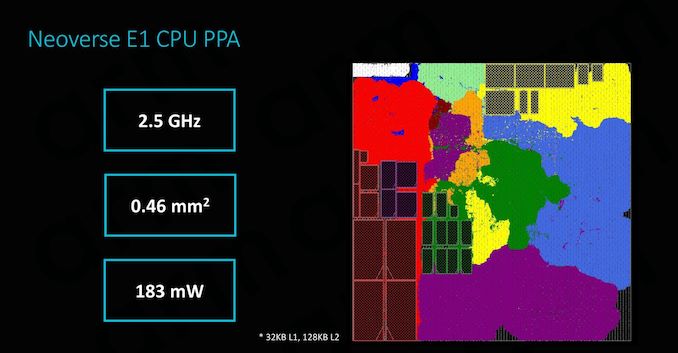
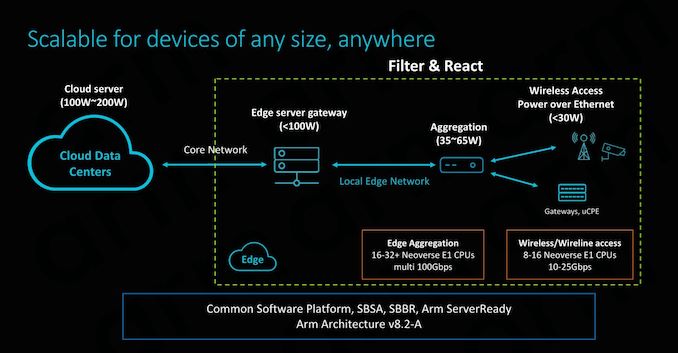
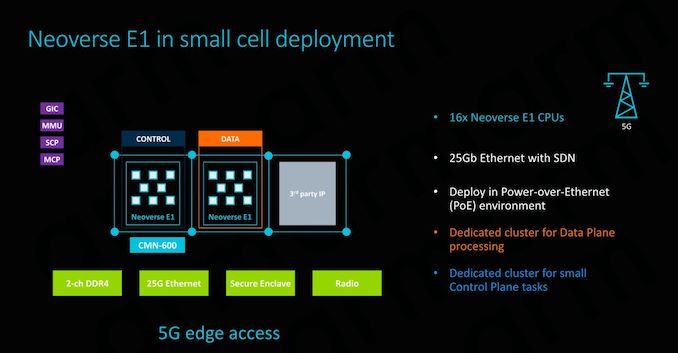
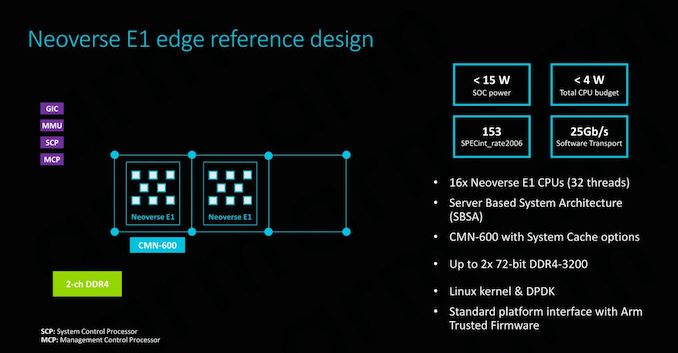
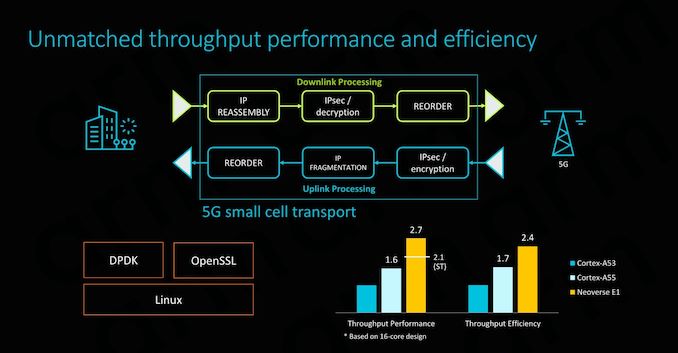
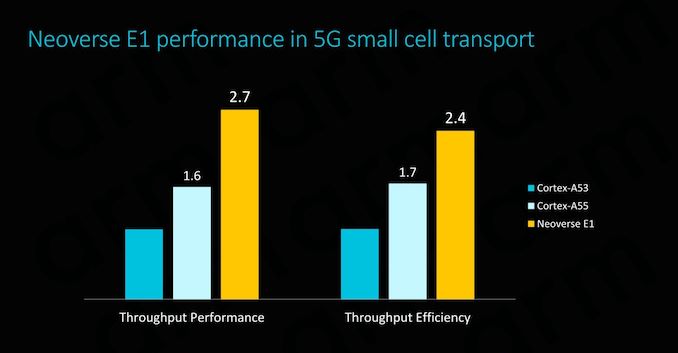








101 Comments
View All Comments
eastcoast_pete - Thursday, February 21, 2019 - link
I stand corrected on IBM still selling x86 servers (they don't), and am actually glad to hear that Power is also used in smaller shops. It's just that I haven't run into too many Power systems around here. It's a very capable arch.Kevin G - Thursday, February 21, 2019 - link
The big Power users are also the big cloud providers. Google and Amazon have reportedly taken a liking to openPower hardware. Facebook has reportedly looking into openPower as well. Granted this are small scale compared to the number of x86 systems these companies have, it was a much need shot of energy into the Power platform.nevcairiel - Wednesday, February 20, 2019 - link
Microsoft already ported Windows Server to ARM, and their entire development stack has support for ARM and ARM64 now, so its only a matter of time for the other server products to be made available.HStewart - Wednesday, February 20, 2019 - link
It really funny that Microsoft did not trust that environment enough to created Surface using ARM processor.GreenReaper - Wednesday, February 20, 2019 - link
Uh . . . that's reportedly because Intel came begging them *not* to for the Surface Go 2018 (and probably cut them a very nice deal on the Pentium Gold as a result): https://www.techradar.com/uk/news/microsoft-surfac...As mentioned, you can also compile for 64-bit ARM in VS now. This is a major win for some apps which truly require native execution (which is not all of them, but enough to be a pain):
https://blogs.windows.com/buildingapps/2018/11/15/...
Will it actually become a viable platform as a result of all this? I suspect it still won't be the default in five years, but in cost-conscious areas it could end up with a foothold. Even if Microsoft doesn't go down that route, it may be open for others to do so for specific purposes, such as education.
eastcoast_pete - Wednesday, February 20, 2019 - link
Not funny; rather, cautious. None of the A76 designs were in silico when MS designed the current Surface. When you specc out a design like the Surface, you base it on what's available at that time, not what might be around next year. Otherwise, the chance of ending up with egg on one's face is uncomfortably high.eastcoast_pete - Wednesday, February 20, 2019 - link
I agree with you, but, as we all know, businesses buy the hardware that can run the software they want or need, not the other way around. In this regard, I am curious if Oracle and SAP are porting their offerings to ARM64 server. If both of those are on board, this design would have a great chance to get strong traction.HStewart - Wednesday, February 20, 2019 - link
One thing that I am concern in this article is that this chip is mark as Simulated in charts which to me is just a marketing term. Also it comparing again existing 2018 designs for both Intel and AMD. An actual fair comparison with Sunny Cove based cpu with more units and such.I also think that just increase cores is not the best way to handle performance, in todays world single core performance is still very important but this depends on the market the chip is intended for but the important part is software compatibility.
Antony Newman - Wednesday, February 20, 2019 - link
H.A Simulated vs Historical point was made in the article. Perhaps you need to reread?
Also : Single Core performance is very important - especially when they are all running flat out.
Intel has to throttle down their multi core beasts so the chips don’t catch fire at 14nm.
At 10nm - Intel will be able to sustain a few more cores before throttling.
And before Intel are at (Intel) 7nm, ARM will likely overtake Intel on the IPC front (assuming that ARM’s ‘prediction is as accurate as my own)
AJ
eastcoast_pete - Wednesday, February 20, 2019 - link
Single core is still important for client computers, but much less so for servers.